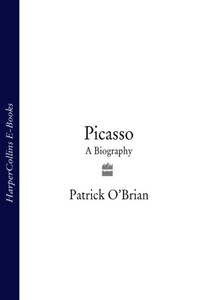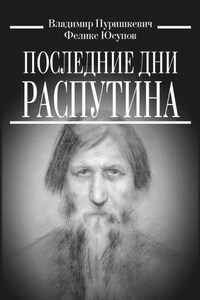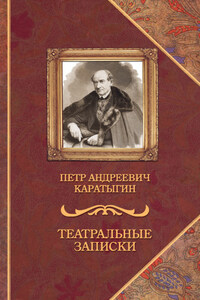HaperCollinsPublishers 77–85 Fulham Palace Road, Hammersmith, London W6 8JB
www.harpercollins.co.uk
First published in Great Britain by William Collins Sons and Co Ltd 1976
Copyright © Patrick O’Brian 1976
Patrick O’Brian asserts the moral right to be identified as the author of this work
A catalogue record for this book is available from the British Library
All rights reserved under International and Pan-American Copyright Conventions. By payment of the required fees, you have been granted the non-exclusive, non-transferable right to access and read the text of this e-book on-screen. No part of this text may be reproduced, transmitted, down-loaded, decompiled, reverse engineered, or stored in or introduced into any information storage and retrieval system, in any form or by any means, whether electronic or mechanical, now known or hereinafter invented, without the express written permission of HarperCollins e-books.
HarperCollinsPublishers has made every reasonable effort to ensure that any picture content and written content in this ebook has been included or removed in accordance with the contractual and technological constraints in operation at the time of publication.
Source ISBN: 9780007173570
Ebook Edition © APRIL 2012 ISBN: 9780007466382 Version: 2014-10-29
Coadjutorici amoenissimae Mariae do dedico
Cover
Title Page
Copyright
Dedication
Preface
Preface to Original Edition
1
2
3
4
5
6
7
8
9
10
11
12
13
14
15
16
17
18
19
20
21
22
Keep Reading
APPENDICES
Index
About the Author
Also by the Author
About the Publisher
SINCE this life of Picasso was written several other books have appeared, some on particular aspects of his work, some on the artist as a man; but none has raised such an outcry as Arianna Stassinopoulos Huffington’s Picasso, Creator and Destroyer (Weidenfeld and Nicolson 1988), nor has any been more strongly condemned since Françoise Gilot published her Life with Picasso in 1964.
For my part I felt the general indignation very strongly and I had hoped that the timely re-issue of this book would allow me to utter a counterblast to Huffington in the form of a preface. I wrote one with some care, and Tom Phillips, who felt even more indignant if possible, very kindly said that I might use his much-admired review in The Independent, a strongly-worded criticism in which he, as a painter, dealt with some points far better than I could. Altogether it was, I thought, a good foreword, a thorough-going, heartfelt counterblast. But as a matter of routine my publishers showed it to their lawyer for a libel-report and to our astonishment he said it was actionable.
It was actionable because I too had written a book on Picasso and therefore I could be looked upon as Huffington’s trade-rival, a rival actuated not by honestly-held beliefs but by sordid malice. If I had produced a book on white mice it would have been actionable if I had said that another book on white mice was ill-informed, ill-written and ill-natured. And in this case, believe it or not, it was also dangerous to quote from Tom Phillips’ review, thus giving it a more lasting form than it had in a newspaper.
That, according to the company’s expert, is the state of the English law; and since Coke defines law as the perfection of reason, one can but bow with all the respect due to perfection, whatever shape it may assume.
PATRICK O’BRIAN
1989
THIS BOOK is an attempt at presenting Picasso whole, the man as well as his art; and its title is designed to emphasize the importance of those years of his life when he was Pablo Ruiz, his childhood in Málaga and La Coruña, and above all his adolescence in Barcelona. They shaped him forever; and since the enormous body of his work cannot be fully appreciated without a knowledge of its Spanish, and even more of its Catalan foundations, the early chapters go deep into his family background and his formative years, drawing on the immense collections of early works and documents that he presented to the Museo Picasso in Barcelona in 1970 and on many Catalan texts.
Art-historians have sometimes divided Picasso the painter, sculptor, draughtsman, lithographer, engraver, and potter from Picasso the man, and for their purpose no doubt the method answers; other writers have spoken of Picasso as though he were only incidentally an artist, concentrating upon the man as he was to be seen away from his easel. The present book aims at striking the mean between these two extremes and at showing a man who, though wholly devoted to his art, spending the most significant and perhaps even the greatest part of his life in his studio, nevertheless lived intensely outside it: yet it does not stray far into the field of criticism, analysis, or interpretation.
There are several reasons for this, and the first is that Braque was surely right in saying that the only important thing in art is that which cannot be explained. Then, while detailed analysis and technical description certainly have their value, they would be out of place in a book that is intended for the intelligent but unspecialized reader. And as for interpretation, that source of so many books about Picasso, it seems to me of value only when the author is a man as interesting as his subject. In the course of my reading I have necessarily waded through thick clouds of interpretative Teutonic metaphysics and a great deal of homespun psychology; but few of the writers came anywhere near this standard and little of what they wrote shed much light on Picasso. What I have done, therefore, when I come to an important picture, is to describe it as accurately as I can, without obtruding any attempt at explanation on the reader, still less telling him what he ought to think. Then I say something about its impact on me; and when, as it sometimes happens, this differs from the generally accepted view, I give that view as well: it is only for the very early or the very late work, where there is as yet no consensus, that I offer my own opinion and little more.














